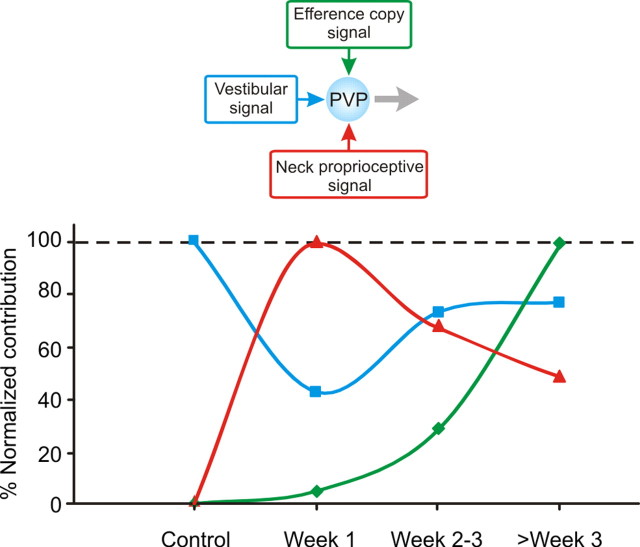Figure 7.
The time course of dynamic regulation of multimodal integration in the direct VOR pathway (i.e., type I PVP neurons) after contralateral labyrinthectomy. Responses are normalized relative to the maximum response to each of the three inputs: vestibular (blue; measured by whole-body rotation), neck proprioceptive (red; measured by body-under-head rotation), and efference copy signal (green; measured by the difference between active and passive head-on-body rotation). All values are normalized relative to the maximum response (i.e., 100%) for each input. The relative contribution of the vestibular input decreased during the first week after lesion by >50%, whereas during this same period the contribution of neck signals increased to its maximum value. Over the next weeks as the vestibular contribution returned to prelesion levels, the contribution of neck inputs decreased. Moreover, by week 3, the response of PVP neurons was enhanced during active relative to passive head-on-body movements, suggesting the additional integration of an efference copy of the neck motor command at the level of the VOR interneurons.

